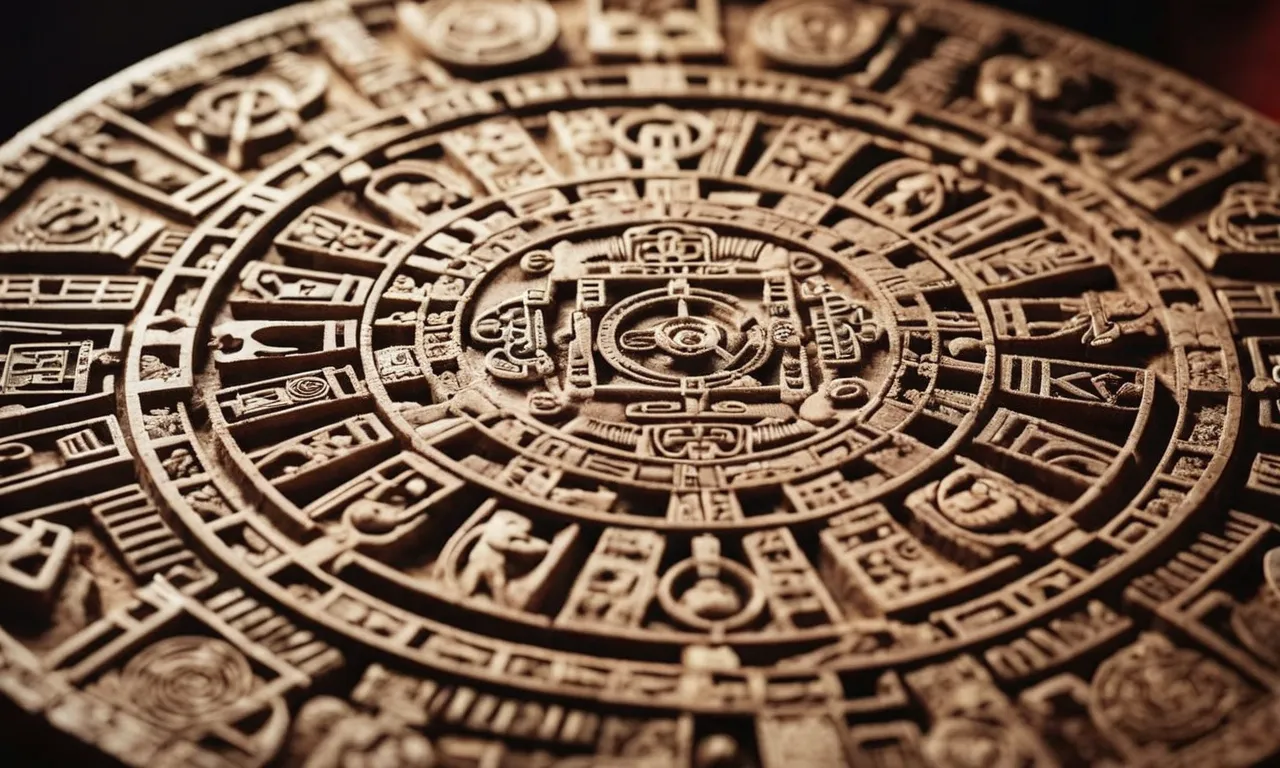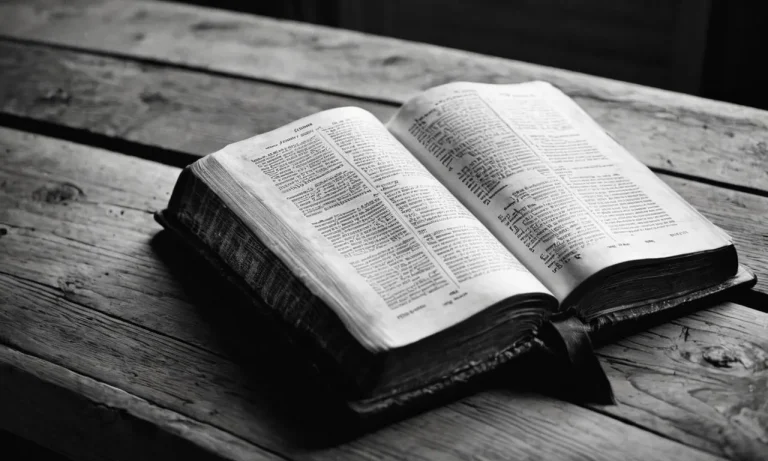Unveiling The Profound Meaning Of Aztec Symbols
In the heart of ancient Mesoamerica, the Aztec civilization flourished, leaving behind a rich tapestry of symbols that continue to captivate and intrigue scholars and enthusiasts alike. These intricate glyphs and iconographic representations hold profound meanings, offering a window into the beliefs, rituals, and worldview of this remarkable culture.
If you’re short on time, here’s a quick answer to your question: Aztec symbols were deeply rooted in their cosmological beliefs, representing deities, natural elements, and various aspects of their daily lives.
From the iconic feathered serpent to the intricate calendar glyphs, each symbol carried layers of meaning, reflecting the Aztecs’ profound connection to the natural world and their spiritual practices.
In this comprehensive article, we will delve into the fascinating realm of Aztec symbols, exploring their origins, meanings, and the profound impact they had on the Aztec civilization. We will unravel the symbolism behind the revered deities, the intricate calendar system, and the intricate glyphs that adorned their magnificent temples and codices.
Join us on this captivating journey through the symbolic language of the Aztecs, where every line and curve holds a story waiting to be told.
The Feathered Serpent: A Symbol of Duality and Renewal
The Iconic Representation of Quetzalcoatl
The feathered serpent, known as Quetzalcoatl in Aztec mythology, is an iconic symbol that has captivated the imagination of scholars and enthusiasts alike. This enigmatic figure combines the characteristics of a serpent and a bird, representing the fusion of the earthly and the celestial realms.
According to Britannica, Quetzalcoatl was revered as the “feathered serpent god” and was associated with various aspects of life, including wind, air, and learning.
Duality: The Balance of Opposites
The feathered serpent embodies the concept of duality, a central theme in Aztec cosmology. It symbolizes the balance and coexistence of contrasting forces, such as life and death, light and darkness, and the masculine and feminine energies. This duality is represented by the serpent’s earthly nature and the bird’s ability to soar through the heavens.
The Aztecs believed that maintaining this equilibrium was crucial for the harmonious functioning of the universe.
Renewal and Rebirth in Aztec Cosmology
Beyond its representation of duality, the feathered serpent also signifies renewal and rebirth. It is believed that Quetzalcoatl, as the embodiment of this symbol, was associated with the cycle of the seasons, the shedding of the serpent’s skin, and the renewal of life after periods of darkness or destruction. According to Ancient Pages, Quetzalcoatl was revered as the creator of the world, the god of wind and air, and the bringer of knowledge and culture to the Aztec people.
His association with renewal and rebirth was deeply ingrained in Aztec beliefs and rituals.
The feathered serpent’s symbolism continues to resonate in modern times, serving as a powerful reminder of the interconnectedness of all things and the cyclical nature of life. Its enduring presence in Aztec art and artifacts, such as the famous Templo Mayor in Mexico City, where a colossal feathered serpent sculpture was discovered, attests to its profound significance in the ancient Mesoamerican world. 😍
Decoding the Aztec Calendar Glyphs
The Aztec calendar system was a remarkable achievement, reflecting the profound understanding of celestial cycles and the intricate relationship between the cosmos and human existence. This intricate system, deeply rooted in their spiritual beliefs and astronomical observations, was encoded within a series of glyphs or symbols that held profound meanings.
Let’s delve into the fascinating world of the Aztec calendar glyphs and unravel their significance.
The Tonalpohualli: The Sacred Almanac
At the heart of the Aztec calendar system was the Tonalpohualli, a sacred almanac that governed various aspects of daily life. This 260-day cycle was comprised of 20 trecenas (periods of 13 days), each represented by a unique glyph.
These glyphs, often depicting animals, natural elements, or mythological beings, were believed to possess distinct energies and influences. For instance, the glyph representing “Serpent” symbolized wisdom and renewal, while “Flower” signified joy and beauty.
By consulting the Tonalpohualli, the Aztecs sought guidance for auspicious dates for ceremonies, agricultural activities, and other significant events.
The Xiuhpohualli: The Solar Year
Complementing the Tonalpohualli was the Xiuhpohualli, a 365-day solar calendar that tracked the cycle of the seasons and agricultural activities. This calendar was divided into 18 months of 20 days each, with an additional five-day period known as the “Nemontemi” or “Unlucky Days.”
Each month was represented by a distinct glyph, often depicting deities, natural phenomena, or cultural symbols. For example, the glyph for the month of “Hueytozoztli” portrayed a large monkey, symbolizing the harvest season.
According to Britannica, the Aztec calendar system was so precise that it accurately predicted solar eclipses and other celestial events.
Interpreting the Intricate Calendar Symbols
The interpretation of the Aztec calendar glyphs was a complex and sacred task, undertaken by trained priests and scholars. These symbols were not mere representations but embodied deeper spiritual and philosophical meanings.
For instance, the glyph for “Cuetzpallin” (Lizard) was associated with the concept of duality, representing the balance between opposing forces in the universe. 🤯 The glyphs were often arranged in intricate patterns, forming a visual language that conveyed astronomical knowledge, mythological narratives, and spiritual guidance.
The Aztec calendar system and its glyphs were not just a means of timekeeping but a profound expression of their worldview and connection to the cosmos. These symbols continue to captivate scholars and enthusiasts alike, offering a glimpse into the rich cultural heritage and profound wisdom of the Aztec civilization.
By decoding these intricate glyphs, we can gain a deeper appreciation for the remarkable achievements of this ancient civilization and the profound meanings they held.
| Calendar Type | Purpose | Cycle Length |
|---|---|---|
| Tonalpohualli | Sacred almanac, governed daily life | 260 days |
| Xiuhpohualli | Solar calendar, tracked seasons and agriculture | 365 days |
The Symbolism of Aztec Deities
The Aztec civilization, with its rich cultural heritage, was deeply rooted in symbolism and mythology. Their pantheon of deities was a reflection of their profound reverence for the natural world and the cosmic forces that governed their existence.
Each deity was intricately woven into the fabric of Aztec society, representing various aspects of life, nature, and the universe.
Huitzilopochtli: The Warrior God
Huitzilopochtli, the revered warrior god, embodied the unwavering spirit of the Aztec people. As the patron deity of the Mexica tribe, he was venerated as the embodiment of the sun, war, and human sacrifice.
His iconic image, adorned with feathered headdresses and carrying the Xiuhcoatl (fire serpent) symbolized the Aztecs’ fierce warrior spirit and their quest for conquest. It is believed that over 20,000 sacrifices were made annually in his honor, a testament to the profound reverence the Aztecs held for this powerful deity.
Tlaloc: The Lord of Rain and Fertility
Tlaloc, the ancient god of rain and fertility, played a pivotal role in the agricultural society of the Aztecs. Depicted with a goggle-like mask and a curved staff, Tlaloc was associated with the life-giving forces of water and the earth’s bounty.
His temple, adorned with intricate carvings and sculptures, stood as a testament to the Aztecs’ deep respect for the natural cycles that sustained their civilization. Rituals and offerings were made to Tlaloc to ensure bountiful harvests and prevent droughts, highlighting the Aztecs’ profound connection to the land and their reliance on the benevolence of this revered deity.
Coyolxauhqui: The Goddess of the Moon
Coyolxauhqui, the captivating goddess of the moon, embodied the celestial cycles that governed the Aztec calendar and rituals. Her name, meaning “She Who Has Golden Bells on Her Face,” evokes the imagery of the moon’s radiant glow.
According to Aztec mythology, Coyolxauhqui was dismembered by her brother, the sun god Huitzilopochtli, symbolizing the cosmic battle between day and night. Her scattered body parts, represented by the famous stone sculpture discovered in Mexico City, serve as a powerful reminder of the Aztecs’ profound understanding of celestial phenomena and their deep reverence for the cycles of the universe.
These deities, along with countless others, wove an intricate tapestry of symbolism that permeated every aspect of Aztec life. From the grandiose temples and sacrificial rituals to the everyday practices of agriculture and celestial observations, the Aztec civilization was a testament to the profound meaning they ascribed to the natural world and the cosmic forces that governed their existence.
Aztec Glyphs: A Visual Language of Meaning
The Aztec civilization, with its rich cultural heritage, left an indelible mark on history through its intricate system of glyphs – a visual language that conveyed profound meanings and narratives. These glyphs, etched into stone monuments, painted on codices, and adorning architectural wonders, served as a powerful medium for transmitting knowledge, beliefs, and historical accounts across generations.
The Art of Glyph Writing
The creation of Aztec glyphs was an art form deeply rooted in their cosmological beliefs and worldview. Each glyph was meticulously crafted, combining pictorial symbols and phonetic elements to convey complex ideas and concepts.
The process of glyph writing was a sacred undertaking, often performed by specialized scribes known as tlacuilos, who underwent rigorous training to master this intricate visual language. According to Mexicolore, a leading educational resource on Mexican cultures, the Aztecs developed a sophisticated writing system that blended logographic and phonetic elements, allowing for the representation of both words and sounds.
Deciphering the Pictorial Symbols
Decoding the Aztec glyphs is a fascinating endeavor that unveils the rich tapestry of their culture and beliefs. Each glyph is a intricate composition of pictorial symbols, each carrying a specific meaning.
For instance, the glyph representing the sun, tonatiuh, often depicted as a radiant face with protruding rays, symbolized the life-giving force that sustained the Aztec world. Similarly, the glyph for atl, or water, portrayed as a series of undulating lines, represented the vital element that nourished their agricultural civilization.
😊 These glyphs were not mere illustrations but intricate symbolic representations that conveyed deep philosophical and religious concepts.
Researchers and scholars have dedicated countless hours to deciphering the intricate meanings behind these glyphs, drawing upon historical accounts, archaeological evidence, and linguistic studies. According to a recent study published in the Current Anthropology journal, the Aztec glyph system was remarkably complex, with an estimated 500 to 600 unique glyphs in use, each with multiple layers of meaning and potential combinations.
Glyphs in Aztec Codices and Monuments
The Aztec glyphs found their most prominent expression in the codices – folding books made of amatl bark paper or deerskin – and on the monumental stone sculptures that adorned their cities. These codices, such as the renowned Codex Mendoza, served as repositories of knowledge, chronicling historical events, astronomical observations, and religious rituals through a rich tapestry of glyphs and illustrations.
👏 On the other hand, the glyphs etched onto monuments like the Piedra del Sol (Stone of the Sun) or the Tizoc Stone immortalized the exploits of rulers, commemorated significant events, and conveyed the Aztecs’ intricate understanding of time and the cosmos.
As we delve deeper into the study of Aztec glyphs, we uncover a profound visual language that transcends mere symbols and reveals the complexities of an advanced civilization. Through these glyphs, the Aztecs have left an enduring legacy, inviting us to explore their rich cultural tapestry and gain a deeper appreciation for the ingenuity and sophistication of their visual communication system.
🎉
The Symbolic Significance of Aztec Architecture
The Aztec civilization, known for its rich cultural heritage and advanced architectural achievements, left an indelible mark on the world. Their architectural marvels, particularly the pyramids and temples, were not merely functional structures but symbolic representations of their profound cosmological beliefs and spiritual practices.
The Aztec people believed that their buildings were gateways to the divine realms, connecting the earthly and celestial worlds.
The Pyramids: Stairways to the Heavens
The Aztec pyramids, towering monuments that dominate the ancient cities, were more than just architectural wonders. These stepped pyramids, known as teocalli (houses of god), were seen as symbolic stairways to the heavens, allowing the Aztecs to commune with their deities.
According to the Ancient History Encyclopedia, the pyramids were designed to represent the sacred mountain where the gods resided, and their stepped terraces symbolized the levels of the cosmos. At the summit, priests performed rituals and offered sacrifices, bridging the gap between the mortal realm and the divine.
The Templo Mayor: A Symbolic Representation of the Cosmos
At the heart of the Aztec capital, Tenochtitlan, stood the Templo Mayor, a grand dual-pyramid complex that embodied the Aztec worldview. This awe-inspiring structure was dedicated to two principal deities: Huitzilopochtli, the sun god and patron of the Aztecs, and Tlaloc, the rain god.
The temple’s design and orientation were meticulously planned to align with celestial events and cosmic cycles, reflecting the Aztecs’ deep understanding of astronomy and their reverence for the natural world.
According to NOVA, the Templo Mayor’s eastern side was dedicated to Tlaloc, representing the watery underworld, while the western side honored Huitzilopochtli, representing the fiery sun. This duality symbolized the balance and harmony that the Aztecs sought to maintain between opposing forces, a concept deeply rooted in their cosmological beliefs.
Architectural Motifs and Their Meanings
Beyond the grand pyramids and temples, the Aztec architecture was adorned with intricate motifs and symbols, each carrying profound meaning. Serpent imagery, for instance, was a recurring theme, representing the cyclical nature of time, rebirth, and the earth’s fertility.
The feathered serpent, known as Quetzalcoatl, was a revered symbol of creation and wisdom. 😍
Other architectural elements, such as sculpted stone reliefs and carved friezes, depicted deities, mythological scenes, and historical events, serving as visual narratives that preserved the Aztec culture and traditions.
According to Mexicolore, these intricate carvings were not mere decorations but powerful symbols that conveyed the Aztecs’ deep spiritual beliefs and their connection to the cosmos. 🎉
In essence, the Aztec architecture was a magnificent fusion of form and symbolism, embodying the profound cosmological beliefs and spiritual practices of this ancient civilization. Each structure, motif, and design element served as a symbolic gateway, connecting the earthly realm with the divine and reflecting the Aztecs’ reverence for the natural world and their quest for cosmic harmony.
👏
Conclusion
The Aztec symbols stand as a testament to the rich cultural heritage and profound spiritual beliefs of this ancient civilization. From the iconic feathered serpent to the intricate calendar glyphs, each symbol carries layers of meaning, offering a glimpse into the Aztecs’ deep reverence for the natural world and their unwavering connection to the cosmic forces that governed their existence.
As we unravel the symbolism behind these intricate representations, we gain a deeper appreciation for the Aztec worldview and the intricate belief systems that shaped their daily lives. The symbols serve as a bridge, connecting us to the past while simultaneously inspiring us to explore the depths of human creativity and the universal desire to understand our place in the cosmos.
Whether adorning magnificent temples or etched into ancient codices, the Aztec symbols continue to captivate and intrigue, reminding us of the enduring power of symbolic language to transcend time and culture.
By understanding the profound meanings behind these symbols, we not only honor the legacy of the Aztec civilization but also gain a deeper appreciation for the rich tapestry of human experience and the universal quest for meaning that unites us all.








